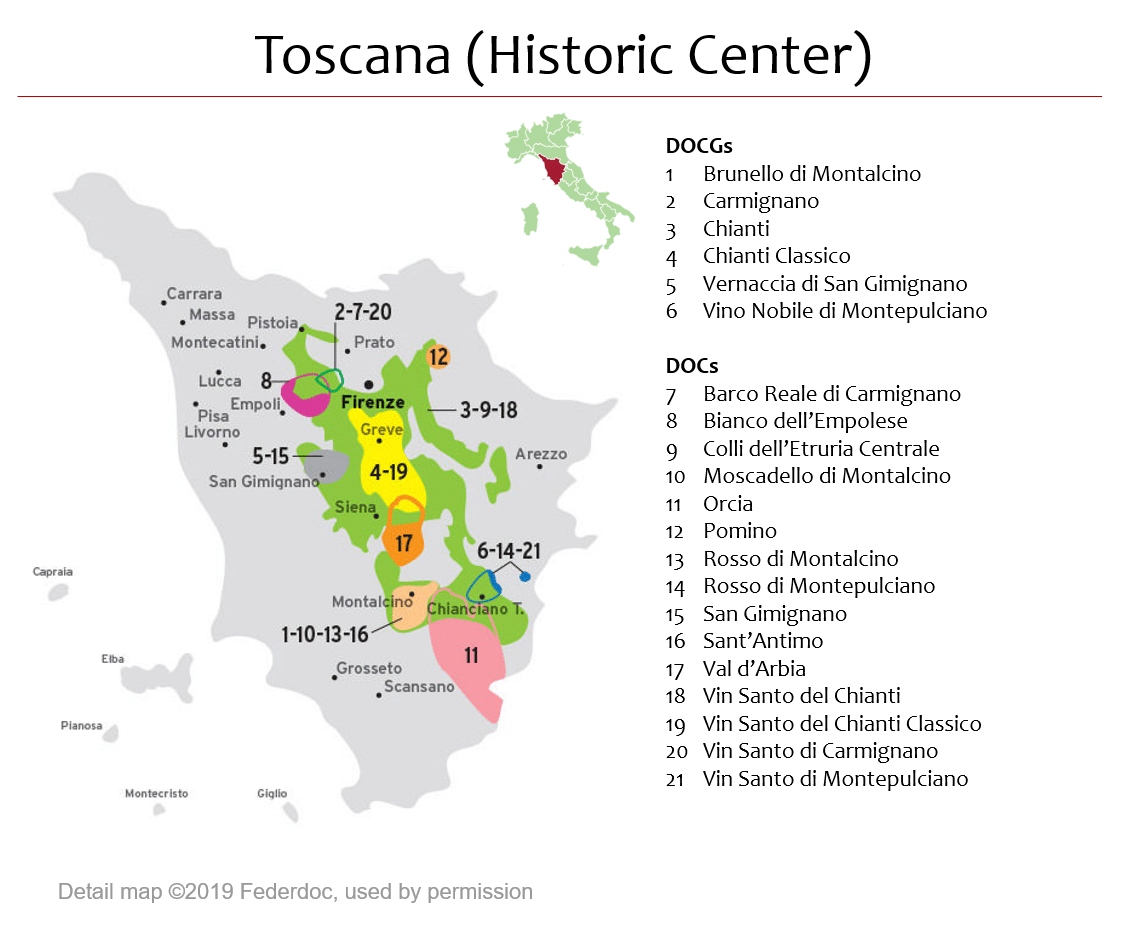Barco Reale di Carmignano DOC
Synopsis
History: Established as a DOC in 1994; Vin Santo di Carmignano split off as a separate DOC in 2013
Vineyard Area: 8 ha / 20 acres (2021)
Production: 2,160 hl / 24,000 cases (5-year average)
Principal Red Grape Varieties:
Styles and Wine Composition
ROSATO WINES
- Rosato, also known as Vin Ruspo (Ro): Minimum 50% Sangiovese; 10–20% Cabernet Franc and/or Cabernet Sauvignon; maximum 20% Canaiolo Nero; maximum 10% Canaiolo Bianco, Malvasia, and/or Trebbiano Toscano; maximum 10% OARG
RED WINES
- Barco Reale (Rd): Minimum 50% Sangiovese; 10–20% Cabernet Franc and/or Cabernet Sauvignon; maximum 20% Canaiolo Nero; maximum 10% Canaiolo Bianco, Malvasia, and/or Trebbiano Toscano; maximum 10% OARG
Significant Production Rules
- Maximum vineyard elevation: 400 m (1,310 ft)
- Minimum alcohol level: 11.0%
- Aging: No minimums specified
Last Disciplinare Modification:
11/13/2013
